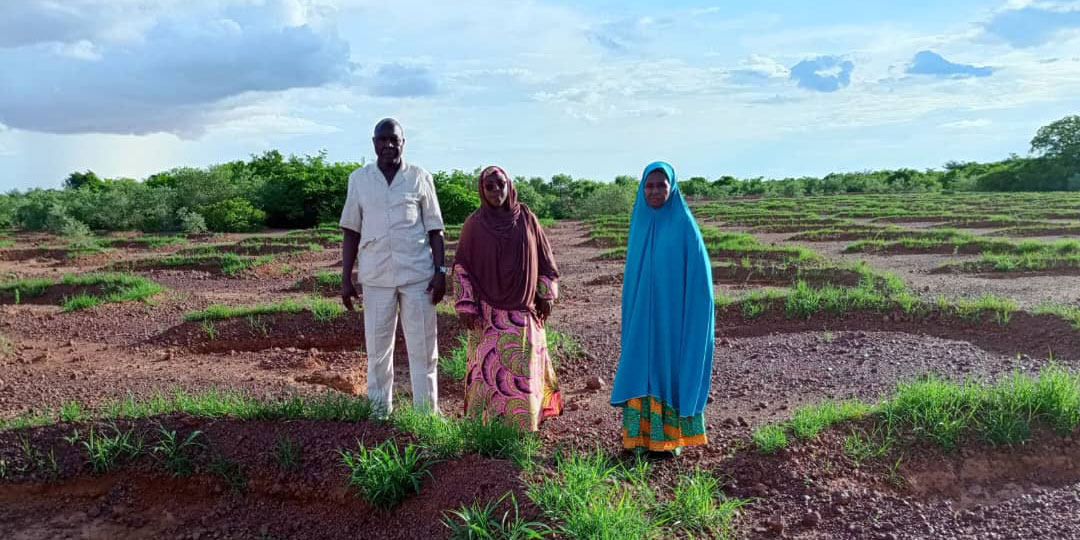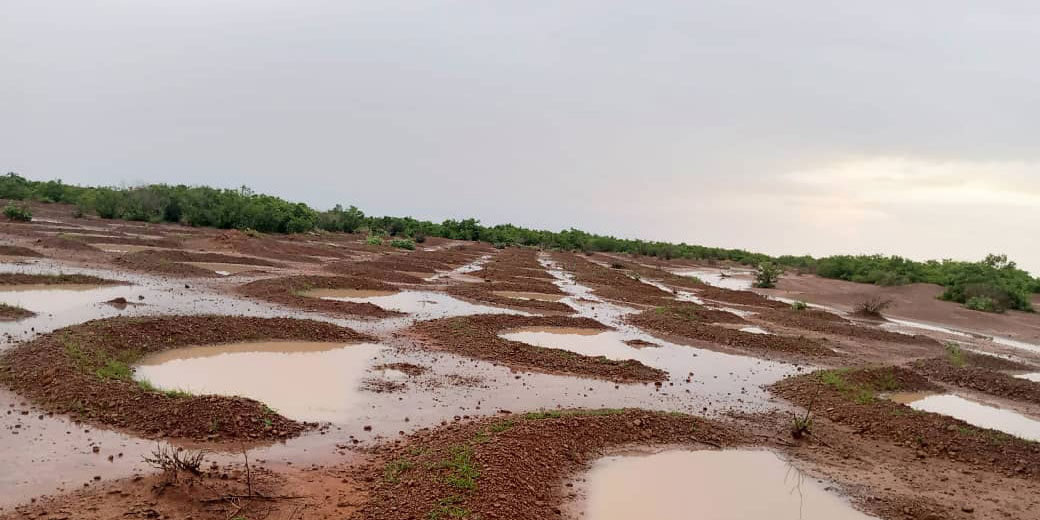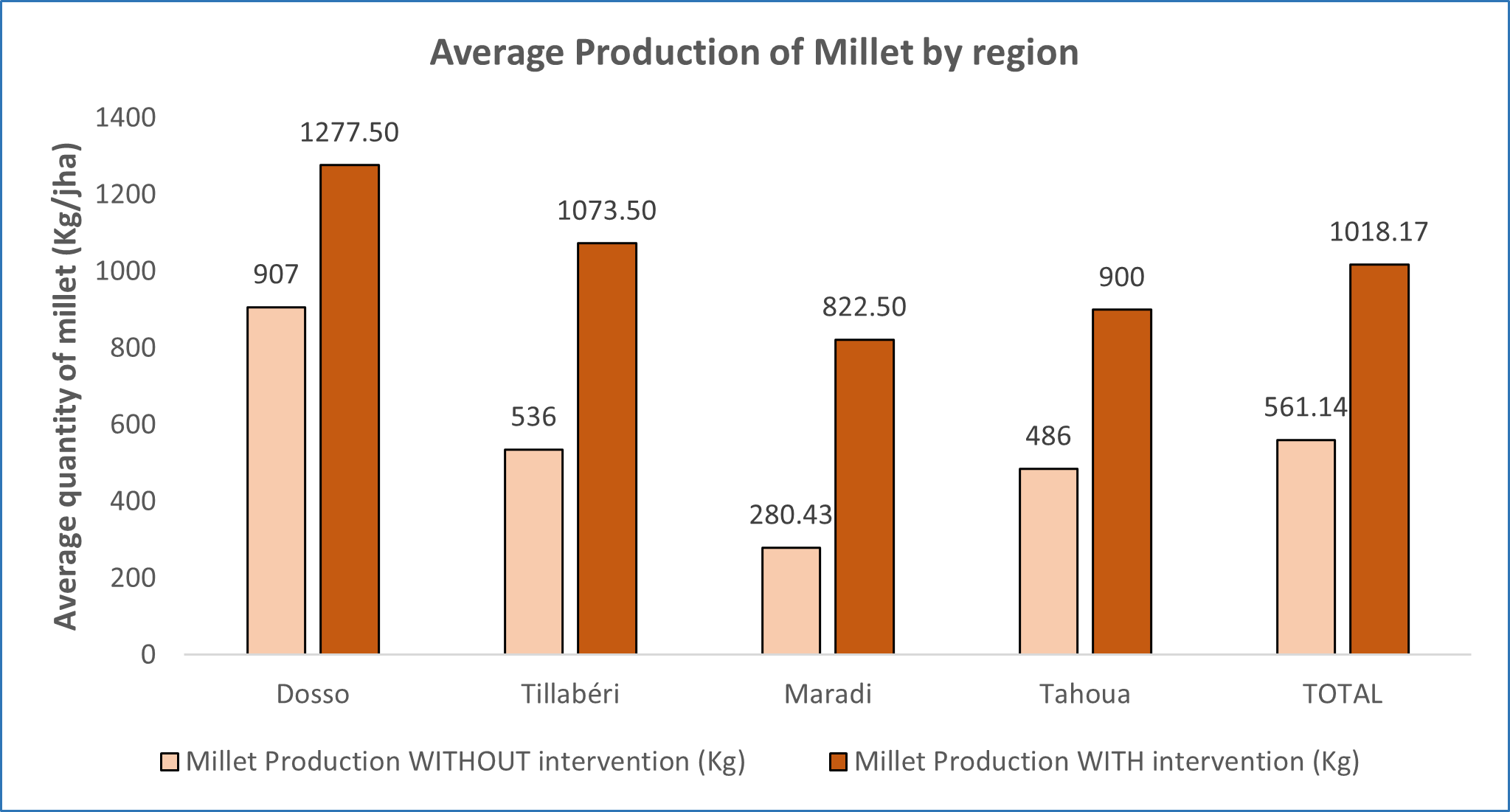
MCA-Niger
Semicircle ditches constructed through the MCC-Niger Compact help collect rainwater in rural Koure, an area known for its diverse wildlife, including giraffes and hippos.
As the old saying goes, “greener pastures lie ahead.” However, this has not been the case for Nigerien livestock herders until recent years. The impacts of rising temperatures and undermanagement of shared grazing lands has turned much of Niger into something resembling a moonscape. But, through specialized NGOs relying on local labor, the MCC-Niger Compact helped communities reclaim more than 70,000 hectares’ (nearly 173,000 acres) worth of degraded land and enhance agricultural productivity with various regreening strategies.
Niger lies at the heart of the West African Sahel, a vast semi-arid belt stretching across Africa. Families in this dry area rely heavily on growing crops in the short rainy season and on their livestock for nutrition and resilience in the increasingly long dry seasons. According to the World Food Programme, more than 4.4 million Nigeriens—almost 20 percent of the population—are food insecure and nearly half of children under age 5 suffer from acute malnutrition. This country has struggled with environmental degradation, desertification, and food insecurity.

MCA-Niger
Giraffes spotted in the Koure region where work to preserve rainwater has been conducted.
In recent years, however, the $442.6 million Niger Compact—an MCC grant program focused on increasing market access and climate-smart agriculture productivity—worked to overcome these challenges. Under the compact, MCC and Niger partnered to massively scale-up innovative practices in natural resource management, soil, and water conservation. These re-greening investments not only helped the climate by absorbing carbon, but also brought about both short- and long-term economic benefits to rural families that depend on livestock for food and economic security.
These benefits have particularly impacted targeted communities living on the edge of the desert, some of the most economically disadvantaged people on earth who are particularly vulnerable to increasing fluctuations in rainfall. These communities face formidable challenges such as food insecurity, financial constraints, and recurrent droughts, and can become trapped in natural resource-depleting cycles that reduce the quality and quantity of their soil and livestock asset-base. This includes resorting to negative coping strategies like overgrazing or converting trees to fuelwood, which further increases their vulnerability.
Through the compact, MCA-Niger—the entity tasked with implementing the MCC-Niger Compact—initiated a series of activities aimed at improving sustainable resource management, notably employing soil and water conservation and soil defense and restoration techniques, such as zai pits, half-moon semicircles and tree and forage planting. The collaborative investment allowed the people of Niger to make transformative improvements in natural resource management, soil quality, and water conservation, yielding remarkable productivity gains and drastically increasing resilience.

MCA-Niger
Half-moon semicircles capture scarce rainwater, stopping runoff and increasing infiltration. This helps replenish aquifers and allows natural revegetation processes to re-green deforested landscapes.
MCC’s climate resilient approach
Much like prairies in the North American Midwest, planting locally adapted grasses, trees and shrubs increases the ability of arid soil to absorb and store limited rainfall, while also boosting organic matter content. The compact created acres of landscape-level trenches to slow runoff and reduce erosion, helping otherwise damaging torrential rainwater to travel more slowly across pastures and fields. These proven land management innovations break cycles of land degradation and create virtuous cycles that serve to improve soil fertility, increase the quantity of forage and food, and decrease farming families’ vulnerability to increasingly unpredictable weather cycles. While labor-intensive, these landscape-level watershed-enhancing techniques will strengthen the resilience of these communities for years to come.
A key element of the intervention involved the mobilization of populations benefitting from the project, particularly women, underscoring the inclusive nature of the work and promoting gender parity in sustainable land management activities. The utilization of revenues from land recovery activities helped participants secure basic needs such as food, clothing, and healthcare, while also investing in resilience and income-generation, such as animal fattening and small-scale trade. These endeavors bolstered household resilience and also mitigated the looming threat of rural exodus, as more youth were able to find sustainable livelihoods within their predominantly rural areas.
Early Signs of Success
Early surveillance studies indicate that these interventions successfully increased millet, sorghum, and cowpea yields (see charts below). In particular, depending on the crop, yields on program-affected plots were roughly 50-80% higher than yields on unaffected plots (perhaps in part because of plentiful rainfall, which would suggest that yield impacts in most years will be smaller). MCC is hopeful that the independent evaluation of this program will validate these early indications. Given the baseline standards of living of farmers who are benefitting, and who by practically every measure are severely disadvantaged, yield increases of this magnitude would represent substantial additions to farmers’ welfare.

MCA-Niger
Average Millet Production (kg/ha) by Region (National Center for Ecological and Environmental Monitoring of Niger)

MCA-Niger
Average Sorghum Production (kg/ha) by Region (National Center for Ecological and Environmental Monitoring of Niger)

MCA-Niger
Average Cowpea Production (kg/ha) by Region (National Center for Ecological and Environmental Monitoring of Niger)
Thanks to MCC’s co-investment with the Nigerien people in these natural resource management techniques greener pastures really do lie ahead for the people of Niger. Local farmers continue to drive the sustainability of these efforts even after intervention support. These cooperative conservation efforts regreening the Nigerien landscape area testament to the transformative power of community-driven initiatives, fostering sustainable development and prosperity for generations to come.

